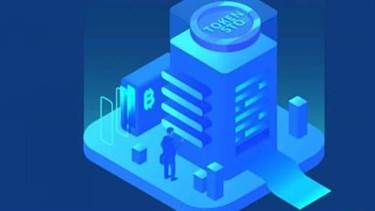What’s Fog Computing? Glossary Of Hardware Phrases
Edge computing is principally a subtype of fog computing that means that knowledge is generated, processed, and stored close together. Fog computing consists of edge processing in addition to the mandatory infrastructure and community connections for transporting the info. The time period fog computing, originated by Cisco, refers to a substitute for cloud computing.

The servers are related to every other and centralized cloud servers, enabling the intelligent circulate of data. These small models work together to handle pre-processing of data, short-term storage, and rule-based real-time monitoring. The fog computing structure reduces the quantity of data transported by way of the system and improves overall effectivity.
What Is Fog Computing?
While cloud computing has become all-pervasive, fog computing is simply coming up to tackle the varied latency points that plague IoT devices. Users can monitor and defend fog nodes utilizing the identical controls, policies, and procedures deployed across the whole IT surroundings and assault continuum to provide enhanced cybersecurity. The fog computing paradigm can segment bandwidth site visitors, enabling customers to boost safety with extra firewalls in the network. By finding these closer to devices, quite than establishing in-cloud channels for utilization and storage, customers mixture bandwidth at access points similar to routers. This in flip reduces the overall need for bandwidth, as much less data can be transmitted away from knowledge centers, across cloud channels and distances.
Sensors and good meters installed throughout the grid acquire data on energy consumption, technology, and distribution. Fog nodes course of this data domestically to steadiness load, manage energy sources, and detect faults. In industrial settings, fog computing performs a crucial function in automation and monitoring. Factories and plants are equipped with numerous sensors and actuators that generate huge quantities of information.
Fog computing has functions in the Internet of Things (IoT), including the next-generation smarter transportation community (V2V within the US and the Car-To-Car Consortium in Europe). The «Internet of Vehicles» promises safer transportation via improved collision avoidance with traffic that moves extra easily. Each car and site visitors enforcement system is an IoT system that produces a stream of information and connects to other vehicles as nicely as site visitors indicators and the streets themselves. History of fog computing The term fog computing was coined by Cisco in January 2014.
How Does Fog Computing Work?
The fantastic factor about fog computing lies in tying collectively various hardware and software program. When a versatile interfacing program isn’t out there for this linking, things can get messy rapidly. Web-based companies and APIs should be created whereas maintaining new physical and digital sensors in thoughts.

It should be noted, however, that some community engineers think about fog computing to be merely a Cisco model for one strategy to edge computing. Heavy.AI is a powerful artificial intelligence platform that permits businesses and developers to simply construct and deploy AI-powered purposes. Heavy.AI is built on prime of the popular TensorFlow open-source library, making it straightforward to get began with deep learning and neural networks.
For simpler duties and limited power/connectivity conditions, edge computing could be enough. Each car produces a substantial amount of information, only from its speed and path, as properly as from how hard it breaks and when it does so to other vehicles. Processing information on the degree of the car using a fog computing technique via an onboard car processing unit is a vital a half of sharing the constrained mobile bandwidth. Fog Computing is the time period coined by Cisco that refers to extending cloud computing to an fringe of the enterprise’s community. It facilitates the operation of computing, storage, and networking companies between finish gadgets and computing information facilities. IFogSim can be an open-source fog computing simulator that can evaluate the efficiency of various fog computing architectures.
What Are The 4 Forms Of Fog Computing?
It allows for dynamic distribution of workloads throughout multiple fog nodes, enabling techniques to scale efficiently in response to various demand. This decentralized method also helps a variety of purposes and providers, making it adaptable to totally different environments and industries. Whether coping with the fast growth of IoT units or the necessity fog computing definition for localized services, fog computing offers a versatile answer that may increase and evolve as required. One of the first benefits of fog computing is its ability to significantly reduce latency. By processing data nearer to where it’s generated, fog nodes can carry out real-time analysis and decision-making.

IFogSim features a library of modules that may simulate numerous aspects of fog computing, similar to community topologies, device types, and software traits. The internet of issues (IoT) is a system of interconnected devices, sensors, and software parts that share knowledge and data. The power of the IoT comes from its capability to gather and analyze massive volumes of information from varied sources. This data can be utilized to enhance efficiency, optimize operations and make higher selections.
What Are The Key Parts Of A Fog Computing Architecture?
These gadgets are knowledge mills and may span a big spectrum of know-how. This means they might have various storage and processing capacities and totally different underlying software program and hardware. Smart transportation networks are another instance of a fog computing software. Each linked automobile, site visitors device, and even street on this sort of grid generates a stream of information. Instead of risking an information breach sending delicate information to the cloud for evaluation, your group can analyze it domestically to the devices that acquire, analyze, and store that knowledge. This is why the character of information safety and privateness in fog computing provides smarter options for more delicate data.
AR/VR gaming — Fog computing handles the processing of nearby objects, making certain easy and sensible interactions throughout the VR setting, even with a slight internet delay. The fog metaphor refers to a cloud sitting low to the bottom, mirroring how fog gathers across the community’s edges. Aspiring ethical hackers can get licensed through EC-Council’s licensed moral hacker course – C|EH program.
- After this gained somewhat popularity, IBM, in 2015, coined a similar term called “Edge Computing”.
- In this state of affairs, a real-time geolocation application utilizing MQTT will provide the edge-compute wanted to track the AGVs movement throughout the store ground.
- Proactively monitor fog nodes, edge units, and community connectivity to ensure optimum operation and well timed intervention when needed.
- According to Domo’s ninth annual ‘Data Never Sleeps’ infographic, 65% of the world’s population — around 5.17 billion individuals — had access to the internet in 2021.
While it could be tempting to over-engineer and add refined devices at the fog degree, the aim is to make sure minimal hardware and software footprint. Anything more will end in an expensive middle-level computation that can become a security liability. The role of every sensor and the corresponding fog node must be carefully thought of. The lifecycle of each fog element could be automated to be handled from the central console.
What Is Fog Computing?
By doing this, fog computing reduces the reliance on the cloud for these resource-intensive tasks, bettering performance and decreasing latency (TechTarget, 2022). Decentralization and flexibility are the principle distinction between fog computing and cloud computing. Fog computing, also known as fog networking or fogging, describes a decentralized computing structure located between the cloud and units that produce knowledge. This versatile structure allows users to position assets, together with functions and the information they produce, in logical locations to boost performance. Because an autonomous car is designed to perform with out the need for cloud connectivity, it is tempting to suppose about autonomous autos as not being linked gadgets.

When choosing hardware, it is necessary to think about the price of storage per GB. Since fog components take up a few of the SLA commitments of the cloud, excessive availability is a must. The useful resource supervisor works with the monitor to determine when and the place the demand is excessive. Fog computing consists of unbiased nodes that should work in a synchronized method. The useful resource supervisor allocates and deallocates resources to various nodes and schedules knowledge transfer between nodes and the cloud. No matter the trade vertical, today’s enterprises see an outpouring of data from shoppers.
The web of issues (IoT) drives data-intensive buyer experiences involving anything from smart electrical grids to fitness trackers. Cloud computing and synthetic intelligence allow for the dynamic processing and storage of those giant amounts of data. This knowledge allows organizations to make knowledgeable selections and shield themselves from vulnerabilities at each, enterprise and technological levels. HEAVY.AIDB delivers a combination of advanced three-tier reminiscence management, query vectorization, rapid query compilation, and help for native SQL. With extreme huge knowledge analytics efficiency alongside those advantages, the platform is ideal for fog computing configurations. The construction’s objective is to locate fundamental analytic companies at the edge of the network, nearer to the place they’re needed.
The rapid development of wireless know-how has given cellular gadget customers tremendous computing energy. The system will then cross knowledge that can wait longer to be analyzed to an aggregation node. Fog computing offers a range of advantages that enhance the performance, effectivity, and scalability of information processing and community methods. Fog computing enables native processing, which ensures quicker decision-making and reduces the dependency on constant cloud connectivity. This local processing functionality is essential in environments where even a slight delay can result in important issues or safety hazards. Factory robots — In industrial settings, fog computing permits for real-time analysis of sensor data (like temperature or vibration) from machines.
By keeping sensitive information nearer to its supply and reducing the amount of information transmitted over the internet, fog computing minimizes the chance of knowledge breaches and cyberattacks. Additionally, native processing permits for better compliance with data safety regulations, as information could be anonymized, encrypted, or otherwise secured before it’s despatched to the cloud. These parts collectively type a sturdy fog computing architecture that enhances the efficiency and responsiveness of knowledge processing in IoT ecosystems. By leveraging localized assets, fog computing mitigates latency, conserves bandwidth, and enables real-time knowledge analysis, making it a significant know-how for the future of distributed computing. Data, processing, storage, and functions are spread between the info supply and the cloud in a decentralized computing setting often recognized as fog computing. Fog computing brings the advantages and power of the cloud closer to the place data is produced and used.
It also supplies more computing resources for additional analysis, which makes the cloud a complementary ecosystem for fog computing applications. Any system having processing storage and community connectivity is usually a fog node in fog computing and placed on a railroad observe or a gasoline station. Using solely microcontrollers and microchips, Mist computing is light-weight computing in the community net.
